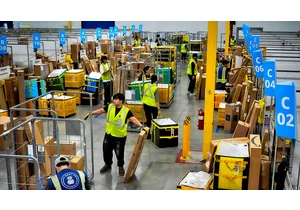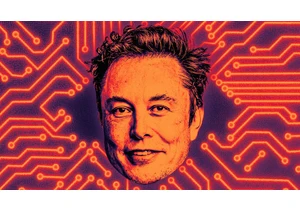Branded is a weekly column devoted to the intersection of marketing, business, design, and culture.
Driverless-car brands have plenty of obstacles to maneuver around. So-called robotaxi enterprises such as Cruise and Waymo want to build name recognition just like any other consumer brand. But at the same time, they’ve been engaged in a curious competition: a race to avoid having their names associated with crashes and other mishaps. Maybe make that an anti race.
For now, Cruise seems to have lost that competition, losing permission to operate its passenger service in San Francisco and suspending public driverless-car operations nationwide, after a grim incident initiated by a human hit-and-run driver that left a woman hospitalized in serious condition. “The most important thing for us right now is to take steps to rebuild public trust,” the company said in a social media statement, adding that it would “take time to examine our processes, systems, and tools and reflect on how we can better operate in a way that will earn public trust.” Meanwhile, Waymo, which has so far avoided a similarly high-profile incident, just announced a partnership with Uber on a new pilot program in Phoenix. (Cruise did not respond to a request for additional comment for this column.)

This is obviously a dramatic setback for Cruise, a GM subsidiary that had been testing driverless taxis in Austin and Phoenix as well as San Francisco, and was reportedly eyeing similar test programs for Seattle and Nashville. In many ways, it was following a standard urban-tech playbook: building name recognition and word of mouth in key markets, leveraging good buzz with a combination of gee-whiz curiosity and trust. “We’re on a trajectory that most businesses dream of, which is exponential growth,” Cruise CEO Kyle Vogt said earlier this year.
But that playbook is in need of editing when it comes to driverless cars—and for that matter, for a shifting regulatory environment and a more tech-skeptical zeitgeist.
In San Francisco, it had been less than three months since state regulators expanded Cruise’s ability to operate as a rival to human-driven passenger services. Google parent Alphabet’s robotaxi subsidiary, Waymo, also had permission to test its autonomous vehicle (AV) service in the city, making San Francisco a living lab for the concept—a role the city has played many times.

But this iteration of Beta Test-opolis has been different—the buzz often had more to do with problems than the novel thrill of a robot ride. San Francisco officials groused that AVs were, at the very least, a nuisance. There were clearly lots of problem-free rides, but those didn’t make news; the snafus did. And Waymo wasn’t exempt—one of its cars killed a dog—but Cruise attracted attention with a variety of incidents, such as allegedly blocking traffic, interfering with emergency vehicles, colliding with a fire truck, and getting stuck in wet cement.
Most recently, a woman was knocked into the path of a Cruise vehicle by a human-driven car. The robotoxi “detected a collision” and stopped, according to Cruise, “then attempted to pull over to avoid causing further road safety issues, pulling the individual forward approximately 20 feet.” This reportedly left a “gruesome trail of blood”—and soon inspired California to order Cruise’s AVs off of San Francisco streets, suggesting, in the process, that the company had “misrepresented” the vehicles’ safety.
That Cruise not only did so with no fuss, but idled in other test cities and struck a penitent tone, partly reflecting its singular situation. The brand is built on the idea that AVs are safer than human drivers. “The driverless future,” its site promises, will be “safer—for all of us.” There’s certainly research to back this general proposition. But one terrible accident can outweigh any number of chart-filled white papers. And right now, being synonymous with the idea of self-driving technology is looking like a risky proposition.
That may be particularly true now as government regulators are showing more ambition to reel in tech companies than they have in years—challenging mergers, targeting giants like Amazon and Google, and attempting to set proactive guardrails on nascent tech like AI.
We’re a long way, it seems, from the days of cheering on the “move fast and break things” vibe and the veneration of the urban-disruption model that made the likes of Airbnb and Uber into multibillion-dollar enterprises. That doesn’t mean Cruise can’t get back into the AV race—and ultimately, it seems inevitable that AVs will be a thing—but the brand will now have to overcome an association, however unfair, with glitches and accidents. It will be a long road back to establishing a reputation that’s convincingly rooted in safety, and—tempting as they may be—there are no good shortcuts.
Ak chcete pridať komentár, prihláste sa
Ostatné príspevky v tejto skupine
A software engineer became X’s main character last week after being outed as a serial moonlighter at multiple Silicon Valley startups.
“PSA: there’s a guy named Soham Parekh (in India) w

The flash floods that have devastated Texas are already a difficult crisis to manage. More than 100 people are confirmed dead

Amazon is extending its annual Prime Day sales and offering new membership perks to Ge

How would you spend $342 billion?
A number of games called “Spend Elon Musk’s Money” have been popping up online, inviting users to imagine how they’d blow through the

On Tuesday, AI lab Moonvalley

As Elon Musk announced plans over the Fourth of July weekend to establish a third political party,
